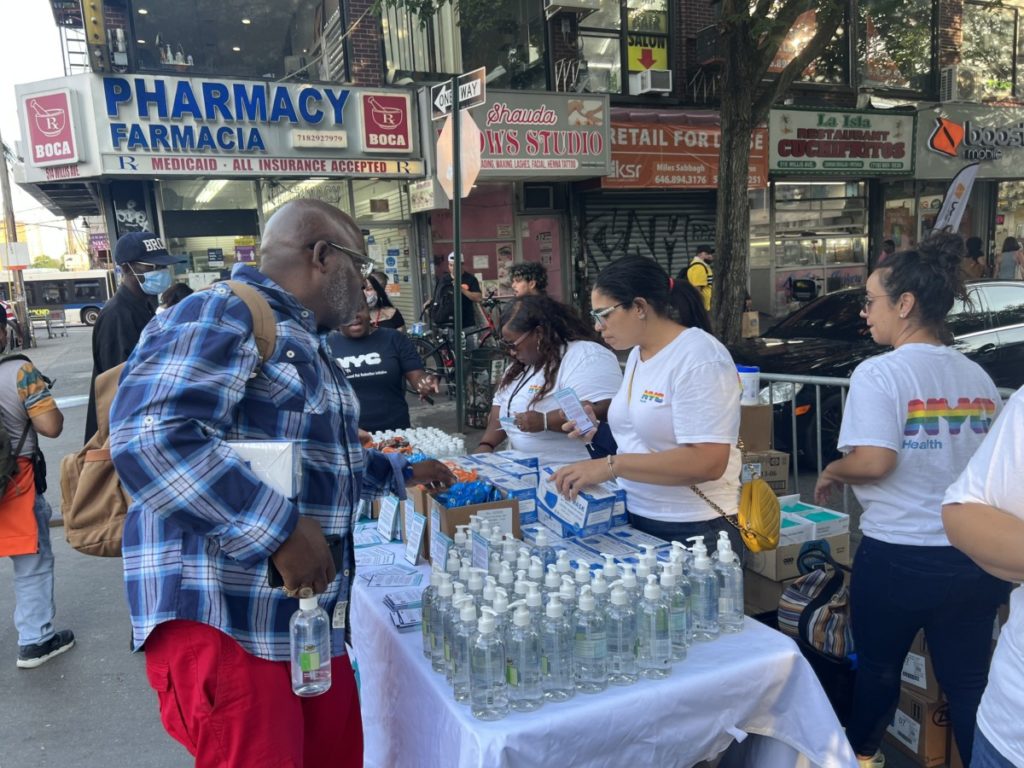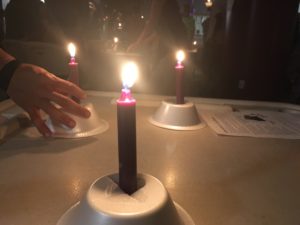
Bronx community leaders gathered for a night of Monkeypox outreach Wednesday, to raise awareness about the spread of Monkeypox in the Bronx and address the disproportionate impact the disease has on Black and Latino communities.
Members of the community were given information about vaccination resources and educational pamphlets on how to protect themselves from Monkeypox. They were also given condoms, sanitary products and encouraged to seek care if they feel sick or identify a rash or sore.
“We know that inequities continue to exist. The numbers within our communities, particularly communities of color among African American and Latino men are still high when compared to other groups” said Bronx Borough President Vanessa L. Gibson, who’s office hosted the event in partnership with the Bronx Chamber of Commerce, Third Avenue Business Improvement District, NYC Health and Destination Tomorrow.
Though cases are beginning to decline citywide, latest data from New York Health as of September 18 shows 632 of the identified 3480 citywide cases are in the Bronx. And of those citywide cases, 60% are among Blacks and Hispanics, the majority demographic group of the Bronx.
“Lot of people out there haven’t been able to get the education that they desperately need in order to understand and take the steps that are necessary to protect and prevent from being harmed by it” said Sage Rivera, Chief Development Program Officer for Destination Tomorrow, a grassroots agency and the LGBTQ+ center for the Bronx borough. The center also serves as a first dose Monkeypox vaccination site.
Rivera also talked about the importance of not falling prey to stigmatization against a certain community because they are the most affected. “It’s very, very easy to fall into the trap of what’s going on, because it’s been so prevalent amongst people of color, and affecting so much the LGBTQ community. This is a skin to skin contact disease, plain and simple,” he said.
On July 18, the five Borough Presidents sent a joint letter to the Centers For Disease Control and Prevention Director Dr. Rochelle Walensky demanding more Monkeypox vaccines be sent to New York City. Latest New York Health data shows 95,345 doses have been administered citywide with 5,639 doses administered in the Bronx. About a third of the citywide doses were administered to those identifying as Black or Hispanic.
“We do know that access is an issue. So we want to get more vaccination sites,” said Anita Reyes, Assistant Commissioner, Bronx Neighborhood Health, Department of Health and Mental Hygiene.
New York City Health recently opened a Tremont Monkeypox vaccination clinic in the Bronx. The clinic, located at 1826 Arthur Ave., is open to the public for first dose vaccination walk-ins.
“I think that health is an issue that is still not spoken about enough in the Bronx….Monkeypox is just something that is making a lot of people question what makes them feel safe and healthy in a community, especially for the LGBTQ community,” said Cecil Brooks, a long time Mott Haven resident.
“If we have enough people who are fighting misinformation, and know what resources are available, then we can do our small part to make the South Bronx an even better and more welcoming space,” Brooks said.



